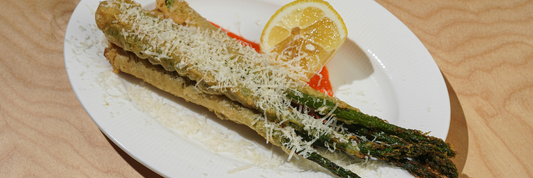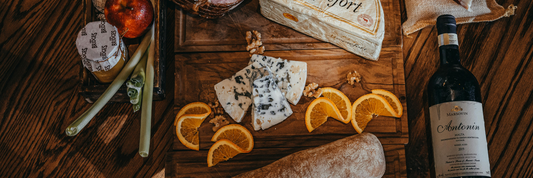There’s nothing quite like the crackle of a fresh artisan loaf. From sourdough boules to long, golden baguettes, handmade breads deserve packaging that protects their flavor and texture while highlighting their craftsmanship. Generic plastic wrap may seal in moisture, but it can also soften crusts and dull the appeal of artisan baking. That’s where the right bread bag makes all the difference.
At Kimecopak, a trusted eco-packaging supplier in Canada and North America, we believe choosing the right bread bag is about more than storage, it’s about preserving flavor, showcasing quality, and reducing waste. This guide explores materials, sizing, breathability, closures, and eco-friendly options to help you select the best bag for every loaf.
- How to Sew a Linen Bread Bag?
- Baguette Bread Bag Guide: Best Materials to Keep Your Loaf Fresh
- Linen vs. Cotton Bread Bag: Which Is Better?
Why Artisan Loaves Need Special Packaging

Unlike mass-produced bread, artisan loaves rely on careful fermentation, hand shaping, and crust development to achieve their distinct flavor and character. Wrapping these loaves in standard plastic not only hides their rustic appeal but also changes their texture.
Why proper packaging matters
- Preserves flavor by preventing staling or contamination
- Protects crusts so they stay crisp rather than soggy
- Reflects artisanal quality when presented in paper, linen, or eco-friendly bags
The right bread bag supports the baker’s craft by maintaining freshness and enhancing presentation.
Want a handy reference? Download our free bread-storage checklist or request a sample eco-friendly bread bag to see the difference for yourself.
Understanding Materials: Paper, Plastic & Fabrics
The material of your bread bag determines how long your loaf will stay fresh and how it will be presented. Each option has unique strengths and trade-offs.
Kraft paper
- Pros: Recyclable, breathable, great for short-term storage and retail presentation.
- Cons: Loaves may dry out quickly if stored longer than 1–2 days.
Plastic film
- Pros: Moisture-proof, prevents drying, useful for longer storage or transport.
- Cons: Softens crusts; less sustainable unless biodegradable.
Linen & cotton
- Pros: Breathable and reusable; linen keeps bread fresh longer than cotton due to tighter fibers.
- Cons: Bread will eventually dry out; requires washing between uses.
Coated fabrics
- Pros: Fabric exterior with a moisture-barrier lining offers a balance of breathability and protection.
- Cons: Higher cost; less “natural” look compared to plain linen or kraft.
Recommendation
- Use paper or linen bags for short-term freshness and presentation.
- Choose plastic or coated fabrics when longer storage or transport is needed.
- Opt for linen or canvas when pursuing reusable, zero-waste storage.
Selecting the Right Size and Shape
A bread bag that’s too large leaves air pockets that speed up staling; one that’s too small can crush the loaf. The right fit preserves both appearance and freshness.

Standard sizes
- Baguettes: about 4.5″ × 2.5″ × 24″, with smaller bags available for demi-baguettes.
- Round loaves: snug paper or linen bags sized specifically for boules or sourdough rounds.
Guidelines
- Measure loaves before purchasing packaging.
- Look for bags designed for your bread type (baguette, boule, batard).
- Avoid “one-size-fits-all” packaging that diminishes presentation.
Breathability vs. Moisture Barrier
Striking the right balance between air circulation and moisture retention is key to bread quality.
Breathable options
- Linen and paper bags allow airflow, keeping crusts crisp.
- Best for loaves consumed within 1–2 days.
Moisture-sealed options
- Plastic and coated fabrics keep bread from drying out but can soften crusts.
- Useful for extended storage or long-distance transport.
Hybrid bags
-
Waxed cotton or PUL-lined fabric provide controlled breathability, keeping both crust and crumb in good condition.
Choose based on how quickly bread will be eaten and whether it’s meant for same-day retail or shipping.
Closure Styles and Ease of Use
Closures not only secure bread but also impact convenience and freshness.
Closure types
- Drawstrings: Common for reusable linen or cotton bags.
- Fold-over gussets: Paper bags folded and taped for retail.
- Adhesive strips: Seal plastic bags quickly and securely.
- Zippers: Found in hybrid or reusable coated fabric bags for long-term use.
Tip: Consider customer experience closures should be easy to open, reseal, and handle, especially for daily bread purchases.

Storage Tips for Keeping Artisan Loaves Fresh
How you store bread after packaging matters just as much as the bag itself. Homesteading and baking experts recommend the following:
- Cool before storing
Always let loaves cool completely to prevent condensation inside the bag. - Slice strategically
Cut loaves from the center, then push the cut sides together, this keeps the interior from drying out too quickly. - Avoid refrigeration
While it seems practical, refrigeration actually accelerates staling for most breads. - Freeze for longevity
Freeze soft breads after 1–2 days if not eaten, wrapping tightly before storing in the freezer. - Linen vs cotton
- Linen bread bags can keep crusty loaves fresh for up to six days.
- Cotton bags are breathable but bread dries faster.
- Pair linen bags with a bread box in dry climates for maximum freshness.
Eco-Friendly and Reusable Options
Sustainability is central to modern packaging. The good news is that bread bags can be both eco-friendly and functional.
Eco-friendly choices
- Kraft paper bread bags: Recyclable and biodegradable.
- Linen and canvas bags: Washable, reusable, and zero-waste.
- Composite fabric bags: Combine durability with a moisture-barrier lining for balance.
Why it matters: According to Accio, 70% of shoppers are willing to pay more for sustainable packaging, making eco-conscious bread bags a smart choice for bakeries and customers alike.
Conclusion: Freshness Meets Sustainability
The right bread bag does more than store loaves, it protects texture, preserves flavor, enhances presentation, and supports eco-friendly values. From breathable linen to recyclable kraft, every material offers unique benefits depending on how bread will be stored, sold, or transported.




